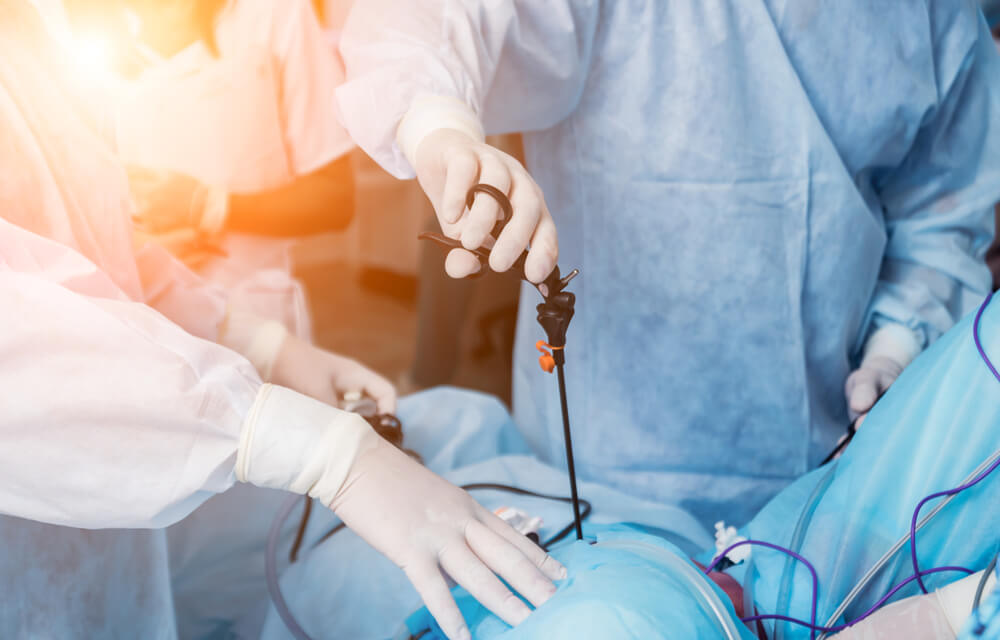At some point in your life, you might find yourself in need of gynecologic surgery from a skilled OB-GYN surgeon. Numerous reasons and conditions mean a woman might need female surgery, ranging from serious gynecological issues to cosmetic reasons. What are the most common female surgeries and gynecological procedures that women every year undergo?
What Is Dilation and Cutterage (D&C)?
This gynecologic surgery is one of the most common types of surgeries that women undergo. A D&C removes the lining inside of your uterus. The name of this female surgery comes from the two parts of the procedure, dilating the cervix to fully view the area being operated on and using a sharp, thin tool to remove tissue from your uterus (curettage). Dilation and curettage are one of the most common female surgeries, and they are sometimes recommended if:
- You had a miscarriage
- You have abnormal bleeding during or outside of your period
- You had an abortion
- You have or might have polyps, fibroids, cancer, or other uterine problems
A D&C is performed by a doctor or OB-GYN surgeon, and it can serve as a diagnostic tool or as a treatment for gynecological issues.
What Is a Hysteroscopy?

This is another one of the most common gynecological procedures performed by an OB-GYN surgeon. A hysteroscopy uses an innovative scope to take a look at your uterine lining and the fallopian tubes. The procedure helps diagnose gynecological issues and determine whether or not additional female surgery is necessary. The hysteroscopy gynecologic surgery can be used to:
- Remove fibroid tumors or polyps on the cervix or uterus
- Take a biopsy of uterine or cervical tissue
- Use other tools, like heat or an electric current, to prevent future bleeding or address bleeding concerns
A hysteroscopy is one of the common female surgeries recommended by an OB-GYN surgeon if you have:
- A misplaced IUD
- Abnormal Pap smear results
- Excessive or unexplained uterine bleeding
- Repeated miscarriages
- Scarring or fibroids
- Post-menopausal bleeding
What Is Cervical Cryosurgery?
Cervical cryosurgery is an important one of the most common gynecological procedures. This female surgery uses liquid nitrogen and freezing cold chemicals to remove potentially dangerous tissue or cells from the cervix. This can be used to address gynecological issues like abnormal cells and irregular bleeding. Cervical cryosurgery is also utilized to destroy cells that could be stage 0 cervical cancer or develop into cancerous cells.
What Is an Endometrial Ablation?
Many common female surgeries address excessive and irregular bleeding, and endometrial ablation is one of these gynecological procedures. Endometrial ablation eliminates your uterine lining to reduce your menstrual flow or stop it entirely. This minimally invasive gynecologic surgery does not involve incisions, and it can be performed with a variety of tools that use radiofrequency, freezing substances, heated substances, and other innovative methods.
Some of the most common reasons why endometrial ablation is recommended include:
- Menstrual bleeding that lasts for longer than nine to ten days at a time
- Anemia as a result of excessive menstrual blood loss
- Extremely heavy periods without another cause, including women who need to change their tampon or pad every two hours or less
You can still have a successful pregnancy after endometrial ablation, but it’s important to partner with your doctor to ensure that you are not experiencing an ectopic pregnancy. If you are also interested in being sterilized during your ablation, your OB-GYN can also take care of that.
What Is a Laparoscopy?
A laparoscopy is a procedure that allows your surgeon an up-close look at your reproductive organs and abdomen. Instead of treating an issue, it’s primarily used to make an accurate diagnosis and serve as a stepping stone for further treatment. Some surgeons use laparoscopies to collect tissue that will be used for further testing, while others use it to see precisely what might be occurring in your body.
Through a very small incision, your doctor can use a microscopic tool to view the exterior of your liver, pancreas, gallbladder, uterus, ovaries, fallopian tubes, spleen, and stomach. Because this is minimally invasive surgery, it’s a convenient option for many women. Laparoscopies are common when other tests that are not invasive, like MRIs or ultrasound, cannot see what the underlying problem is. Your doctor could use laparoscopy to:
- Examine your fallopian tubes to see if some blockages or irregularities might be leading to infertility issues
- Look for tissue masses or problems
- Determine the underlying cause of pain in the abdominal or pelvic region
- Diagnose diseases like pelvic inflammatory disease (PID) or endometriosis
What Is a Hysterectomy?

Hysterectomies are used to remove your uterus. This surgery is permanent and cannot be reversed, so it is not recommended or prescribed lightly. The two most common types of hysterectomies are partial hysterectomies, which leave the cervix but remove the uterus, and a total hysterectomy, which removes both of them.
While these surgeries are serious, they are often the best solution for various conditions. Some of the most common reasons why women receive a hysterectomy include:
- Uterine prolapse, which can occur from trouble with bowel movements, pelvic pressure, or incontinence
- Cancer of the cervix, uterus, or womb
- Persistent pelvic pain that cannot be treated by other means, which can be related to fibroids, endometriosis, or pelvic inflammatory disease
- Heavy periods
- Fibroids, which can often only be permanently solved through a hysterectomy
- Abnormal bleeding
- Endometrial hyperplasia, or uterine lining that is too thick
Your OB-GYN, Dr. Hirsch, can work with you to determine what type of procedure might be most appropriate for your needs. While some surgeries are used as diagnostic tools, others are used as a treatment for serious health conditions, like cancer of the cervix or endometrial hyperplasia. Depending on the reason for your hysterectomy, your surgeon might also remove your fallopian tubes and ovaries. This is not always necessary, but it can be appropriate when you are at high risk of developing cancer or already have cancer present.
Are You Interested in a Gynecologic Procedure to Address Your Issues? Talk to the Team at South Miami OB-GYN Associates
Women of many ages and walks of life seek professional help for things like fibroids and excessive bleeding while menstruating. Unfortunately, some of their concerns are minimized and dismissed. At South Miami OB-GYN Associates, we care deeply about your needs and go above and beyond to listen to what you are saying, perform any necessary diagnostic procedures, and give you our best advice. Whether you need a hysterectomy or any other OB-GYN surgery, our experienced OB-GYNs are here to help.
We care about your health and well-being. Are you ready to share your concerns with a professional to get the advice you need before a surgical procedure? South Miami OB-GYN Associates offers convenient scheduling for everything from your consultation to your surgery. Use the fast, free online scheduling tool above or give us a call at (305) 665-1133.




